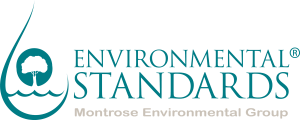 As we discussed in Part 1 of this series, benzene waste operations NESHAP (BWON) consent decrees stipulate that laboratory audits be performed prior to initial use of a lab and thereafter on a two-year cycle. One challenge oil refineries face in compliance with the consent order is that consent decrees do not typically provide detail on the technical requirements, specifications, length, or content of the required laboratory audit. Although state and national accreditation programs have been initiated under the auspices of the National Environmental Laboratory Accreditation Program (NELAP), there are questions about:
As we discussed in Part 1 of this series, benzene waste operations NESHAP (BWON) consent decrees stipulate that laboratory audits be performed prior to initial use of a lab and thereafter on a two-year cycle. One challenge oil refineries face in compliance with the consent order is that consent decrees do not typically provide detail on the technical requirements, specifications, length, or content of the required laboratory audit. Although state and national accreditation programs have been initiated under the auspices of the National Environmental Laboratory Accreditation Program (NELAP), there are questions about:
- Consistency of on-site audits
- Lack of focus and intensity of the audit specific to benzene analysis
- Manner in which labs follow day-to-day procedures
- Consistency among laboratories
- Use of laboratories that may not participate in state or NELAP accreditation
Important technical elements and features of benzene waste operations NESHAP (BWON) laboratory audits are:
PRE-AUDIT PLANNING
- Identify laboratories to be audited – include all laboratories that may be used for benzene analysis
- Establish schedule and submit pre-audit information requests to laboratories – documentation requested should include QA manuals, standard operating procedures (SOPs) relating to both analytical and supporting processes, performance testing data, and internal quality assurance practices
- Develop specific questions and areas for more intensive review
PRE-AUDIT BRIEFING
- Conduct a pre-audit briefing with lab personnel
- Communicate the audit expectations, areas within the laboratory to be evaluated, schedule, timing, and content of the audit
- Address method of auditing, including the importance of talking to and questioning the analysts performing the work
AUDIT PROCESS
- Assess each area of laboratory responsible for sample handling, analysis, and reporting of final analytical results
- Use several methods of review including direct questioning of laboratory personnel, observation of techniques, and review of documentation, method compliance, and “best practices”
- Typical audit of laboratory for benzene analysis should take a chemist between 6 and 8 hours to complete
- Areas to be audited may include:
- Sample collection
- Sample courier services
- Sample receipt, log-in, and storage
- Sample bottleware
- Sample disposal
- Sample analysis and reporting
- Quality systems
- Internal audits and performance testing
- Training
- Raw data review
AUDIT DEBRIEFING & REPORTING
- Conduct debriefing meeting to detail the findings of the audit
- Include senior laboratory and quality assurance staff in the debrief
- Gain concurrence and establish consensus on audit findings and provide the laboratory the opportunity to clarify statements made by laboratory personnel during the audit
- Provide draft report inclusive of findings and Audit Team recommendations for correction of issues to the audit sponsor for internal review
- Issue draft report to laboratory to correct any factual errors and identify discrepancies
- Submit final report to audit sponsors and laboratory
- Ensure that the laboratory develops a corrective action plan (to address audit findings)
- Monitor the corrective action plan as part of continuing improvement process
- Conduct subsequent audits with emphasis on assessing effectiveness of laboratory’s previously stated corrective action
CONSISTENCY THROUGH TECHNICAL SPECIFICATIONS
- Reduce audit findings and ensure consistency among multiple laboratories by developing technical specification
- Prepare technical specifications to provide consistent approach to sample handling, analysis, and reporting of benzene data by contracted laboratory
- Use technical specifications as basis for conducting laboratory audit to ensure compliance with the specification
- Include information on areas of laboratory that are typically audited and provide both method-specific requirements and general requirements associated with laboratory support
Laboratory audits are not only a requirement of consent decree compliance, but also serve to ensure that samples are properly analyzed and that results are accurately reported. Thoroughness of an audit is a critical factor in identifying issues and implementing documented corrective actions. Inter-laboratory and intra-laboratory practices are observed during on-site audits for analytical and non-analytical activities within commercial environmental laboratories. Buyers of laboratory services should prepare technical specifications for analytical and associated peripheral non-analytical activities.
About the Author
Rock J. Vitale, CEAC, is the Technical Director of Chemistry/Principal and a founding partner of Environmental Standards, Inc. Rock has 30 years of analytical quality assurance experience, performing hundreds of rigorous laboratory audits. When he’s not traveling for business, Rock spends his free time fishing, hunting, and hiking.
